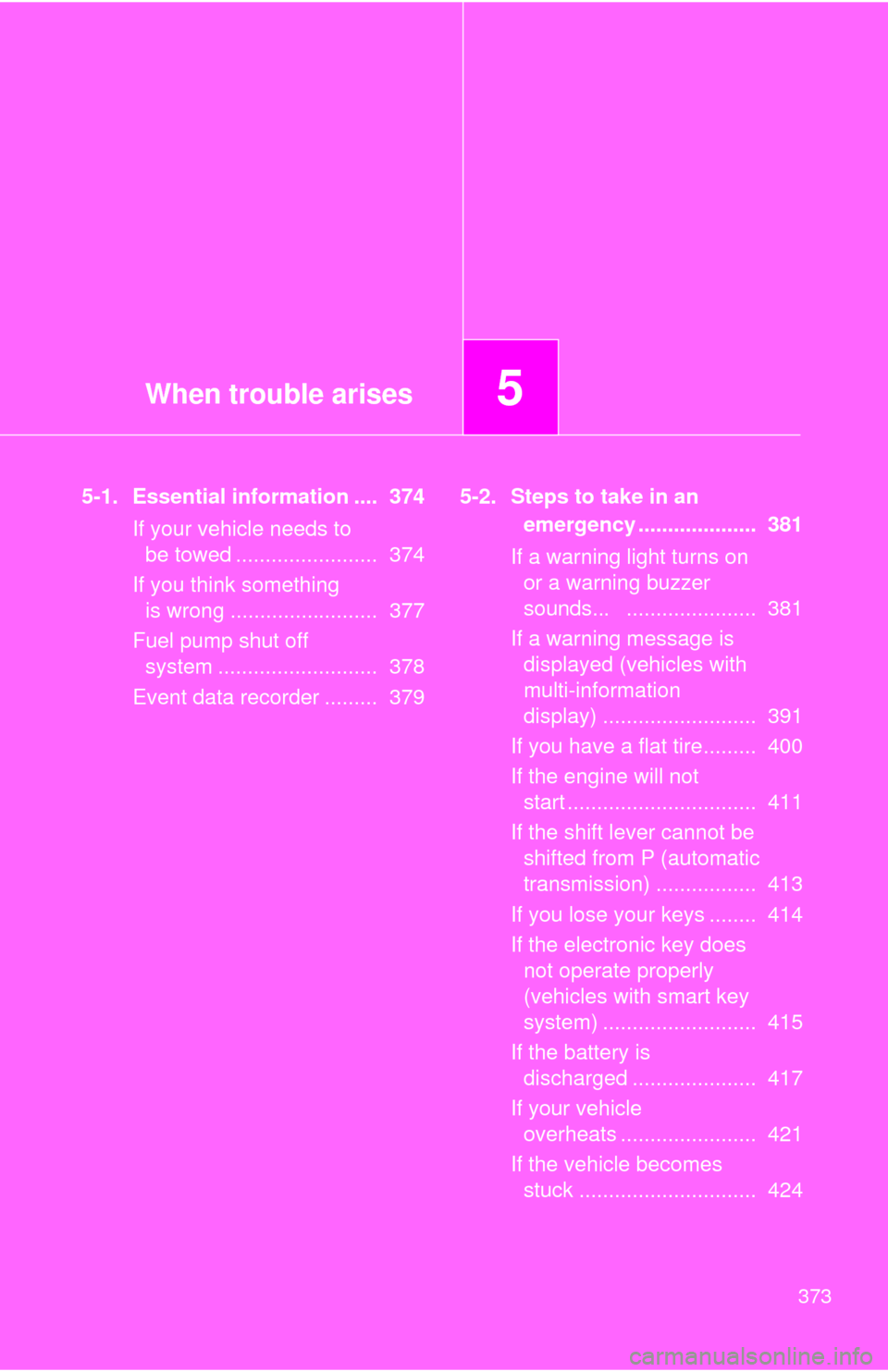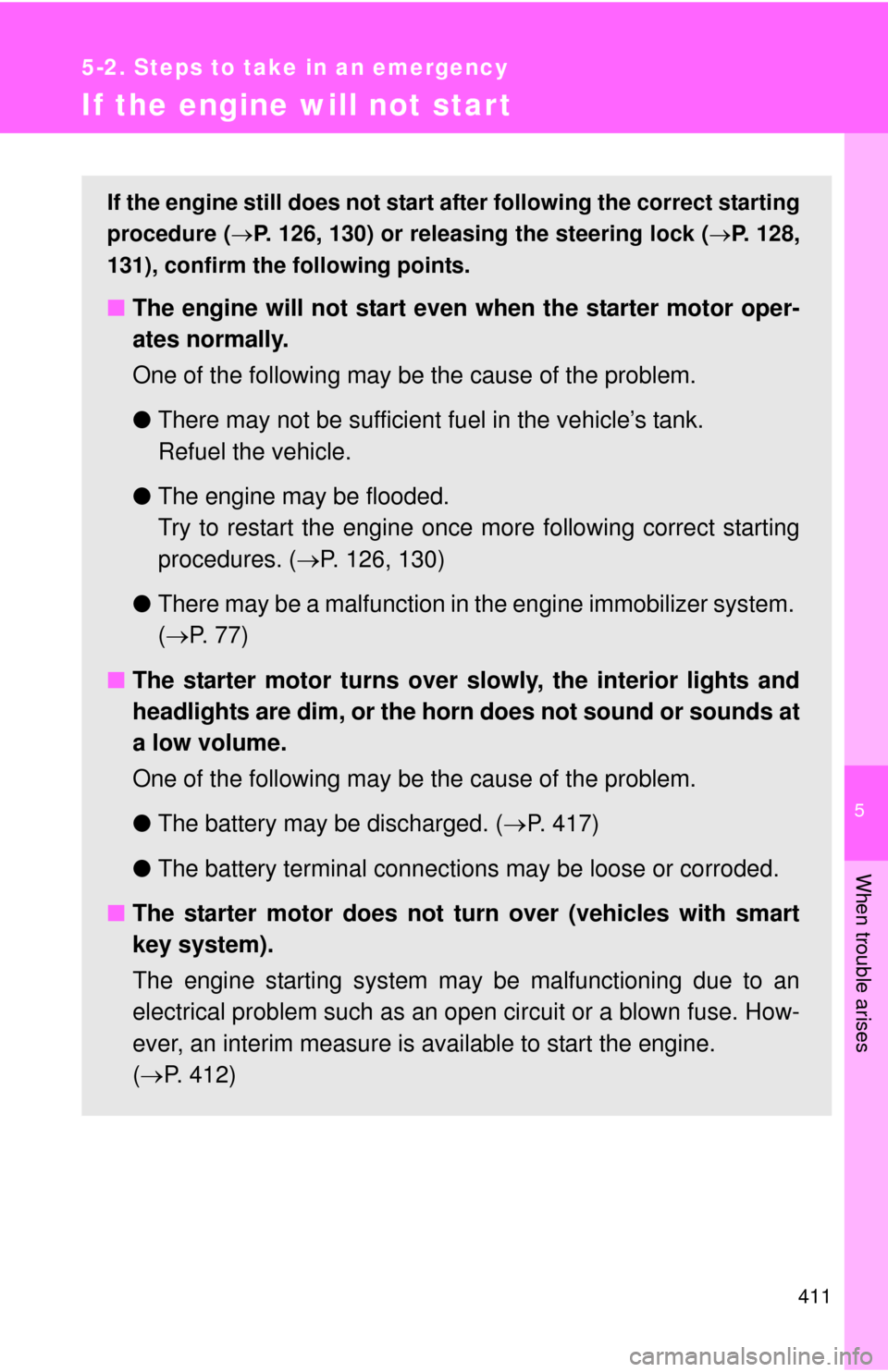Page 353 of 476
353
4-3. Do-it-yourself maintenance
4
Maintenance and care
Key batter y
Replace the battery with a new one if it is discharged.
■You will need the following items:
●Flathead screwdriver (To prevent damage to the key, cover
the tip of the screwdriver with rag.)
● Small Phillips-hea d screwdriver
● Lithium battery CR1632 (vehicles with smart key system), or
CR2016 (vehicles withou t smart key system)
■ Replacing the battery (vehicles with smart key system)
Take out the mechanical key.
Remove the cover.
STEP1
STEP2
Page 354 of 476
354 4-3. Do-it-yourself maintenance
Remove the depleted battery.
Insert a new battery with the
“+” terminal facing up.
■Replacing the battery (vehicles without smart key system)
Remove the cover.
Remove the module.
STEP3
STEP1
STEP2
Page 355 of 476
355
4-3. Do-it-yourself maintenance
4
Maintenance and care
■
If the key battery is discharged
The following symptoms may occur.
●The smart key system and wireless remote control will not function prop-
erly.
● The operational range is reduced.
■ Use a CR1632 (vehicles with smar t key system), or CR2016 (vehicles
without smart key system ) lithium battery
● Batteries can be purchased at your Toyota dealer, jewelers, or camera
stores.
● Replace only with the same or equivalent type recommended by your
Toyota dealer.
● Dispose of used batteries according to the local laws.
CAUTION
■Removed battery and other parts
Keep away from children.
These parts are small and if swallowed by a child they can cause choking.
Open the case cover using a
coin protected with tape etc.
and remove the depleted bat-
tery.
Insert a new battery with the
“+” terminal facing up.
STEP3
Page 356 of 476
356 4-3. Do-it-yourself maintenance
NOTICE
■For normal operation after replacing the battery
Observe the following precautions to prevent accidents.
●Always work with dry hands.
Moisture may cause the battery to rust.
● Do not touch or move any other components inside the remote control.
● Do not bend either of the battery terminals.
Page 373 of 476

When trouble arises5
373
5-1. Essential information .... 374If your vehicle needs to be towed ........................ 374
If you think something is wrong ......................... 377
Fuel pump shut off system ........................... 378
Event data recorder ......... 379 5-2. Steps to take in an
emergency .................... 381
If a warning light turns on or a warning buzzer
sounds... ...................... 381
If a warning message is displayed (vehicles with
multi-information
display) .......................... 391
If you have a flat tire......... 400
If the engine will not start ................................ 411
If the shift lever cannot be shifted from P (automatic
transmission) ................. 413
If you lose your keys ........ 414
If the electronic key does not operate properly
(vehicles with smart key
system) .......................... 415
If the battery is discharged ..................... 417
If your vehicle overheats ....................... 421
If the vehicle becomes stuck .............................. 424
Page 398 of 476
398 5-2. Steps to take in an emergency
Once3 times
Indicates that
the driver’s door
has been
opened or
closed with the
shift lever in P,
the “ENGINE
START STOP”
switch in any
mode other
than OFF and
the electronic
key outside of
the detection
area. Turn the
“ENGINE
START STOP”
switch OFF or
confirm the
location of the
electronic key.
OnceContinuous
(Displayed alternately)
Indicates that
the driver’s door
has been
opened or
closed (with the
shift lever not in
P, the “ENGINE
START STOP”
switch in any
mode other
than OFF and
the electronic
key outside of
the detection
area).
• Shift the shift
lever to P.
• Confirm the location of the
electronic key.
Once
Indicates that
the key battery
is low.
Replace the
battery.
(
P. 353)
Interior
buzzerExterior
buzzerWarning messageDetailsCorrection
procedure
Page 411 of 476

5
When trouble arises
411
5-2. Steps to take in an emergency
If the engine will not star t
If the engine still does not start after following the correct starting
procedure (P. 126, 130) or releasing the steering lock ( P. 128,
131), confirm the following points.
■ The engine will not start even when the starter motor oper-
ates normally.
One of the following may be the cause of the problem.
●There may not be sufficient fuel in the vehicle’s tank.
Refuel the vehicle.
● The engine may be flooded.
Try to restart the engine once more following correct starting
procedures. ( P. 126, 130)
● There may be a malfunction in the engine immobilizer system.
( P. 7 7 )
■ The starter motor turns over slowly, the interior lights and
headlights are dim, or the horn does not sound or sounds at
a low volume.
One of the following may be the cause of the problem.
●The battery may be discharged. ( P. 417)
● The battery terminal connec tions may be loose or corroded.
■ The starter motor does not turn over (vehicles with smart
key system).
The engine starting system may be malfunctioning due to an
electrical problem such as an open circuit or a blown fuse. How-
ever, an interim measure is available to start the engine.
( P. 412)
Page 412 of 476

412 5-2. Steps to take in an emergency
Emergency start function (vehicles with smart key system)
When the engine does not start, the following steps can be used as
an interim measure to start the engine if the “ENGINE START STOP”
switch is functioning normally.Set the parking brake.
Shift the shift lever to P.
Set the “ENGINE START ST OP” switch to ACCESSORY
mode.
Press and hold the “ENGINE START STOP” switch for about
15 seconds while depressing the brake pedal firmly.
Even if the engine can be start ed using the above steps, the system
may be malfunctioning. Have the vehicle checked by your Toyota
dealer.
■ The starter motor does not turn over, the interior lights and
headlights do not turn on, or the horn does not sound.
One of the following may be the cause of the problem.
● One or both of the battery terminals may be disconnected.
● The battery may be discharged. ( P. 417)
● There may be a malfunction in the steering lock system (vehi-
cles with smart key system).
Contact your Toyota dealer if the problem cannot be repaired, or if
repair procedures are unknown.
STEP1
STEP2
STEP3
STEP4